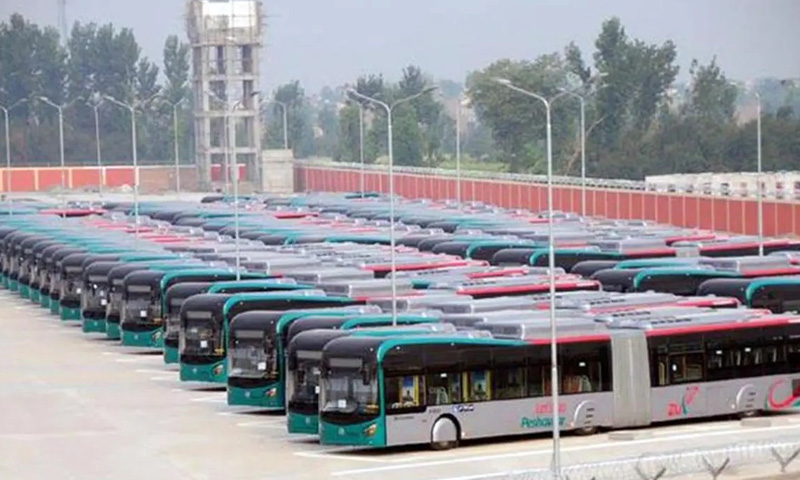- Web Desk
- 4 Hours ago
Gilgit’s iconic suspension bridge — a symbol of community ingenuity, engineering and heritage
-
- Tanveer Abbas
- May 08, 2024

GILGIT: Once dubbed as “Pul-e-Sirat” – the bridge between heaven and hell – the Danyore suspension bridge is not just a passage but a gateway to the past, present, and picturesque landscapes of northern Pakistan.
Spanning 510 feet across the Hunza River, this bridge not only connects the small town of Danyore with Karakoram International University (KIU) but also serves as a gateway to the region’s rich past and breathtaking landscapes.

Constructed in 1960 with limited resources and sheer determination of locals, the bridge is an architectural marvel. Its connection through a 10-meter curved non-cemented tunnel adds to its mystique, guiding travelers towards the Karakoram Highway. Perched above the tunnel lies the shrine of Saint Shah Sultan Ali Arif, further enriching the site’s cultural and spiritual significance.
Syed Sultan Ali Arif was a well-known religious and spiritual leader of Muslims in Gilgit Baltistan, and his presence embellishes the historical aura of the bridge and its surroundings.
Once capable of supporting mini vehicles, the bridge today is open only to pedestrians, serving as a vital conduit for hundreds of university students and emerging as a major tourist attraction. Its construction is a testament to the ingenuity of its builders who, without proper engineering equipment, managed to erect a structure that has stood the test of time.

From the elevated banks of the river, the views of the bridge—with its traditional suspension cables and iron-wrought fencing—are nothing short of breathtaking. Likewise, the panoramic views from the bridge itself allow visitors to fully appreciate the majestic beauty of Gilgit-Baltistan. The bridge is one of the oldest makeshift suspension bridges in the region.
Ehsan Ali, a former local bodies councillor from Danyore, shares his youthful memories of the bridge’s construction. His father Muhammad Jabbir, originally from Hunza and a carpenter by trade, lent his skills to the burgeoning field of suspension bridge construction. The Danyore Suspension Bridge’s construction began in 1957, with the inaugural Jeep crossing in 1960.
While talking to HUM News English at his house in Astan Mohala (named after the shrine of Saint Shah Sultan Ali Arif), Ali said the project was led by Ahmed Ali, affectionately known as “Thikedar Bereno,” a self-taught engineer and esteemed constructor from Hunza, whose reputation was built on his significant contributions to bridge construction throughout Gilgit-Baltistan. Winning the construction tender for a modest sum of Rs 80,000, Bereno utilized the funds to purchase essential materials such as suspension ropes while ensuring fair payment to his labourers.

Sitting under cherry trees and wearing a traditional Gilgiti cap at his home a few hundred meters from the bridge, Ali shared that residents from Danyore, Rahimaabad, Bagrote, and nearby localities generously donated resources, with each household providing two timber blocks to support the construction effort. Regarding the construction of the non-cemented tunnel, Ali mentioned that the contract was awarded to a local cleric affectionately known as “Kaikabad” or “Chunno Molvi,” for Rs 3,000. Kaikabad in turn appointed a supervisor from Hunza, known simply as Zulfi, who recommended the construction approach for the tunnel after deeming direct cutting through the high brinks as unfeasible.
In 2017, the Danyore Suspension Bridge was recognized for its cultural heritage and potential to attract tourists, leading to substantial renovations. The roads approaching both ends of the bridge were upgraded and beautified, significantly enhancing the visitor experience. Near the Gilgit side of the bridge, a notable Buddhist rock carving site was preserved and displayed, enriching each visit with historical and educational insights.
The tunnel connected to the bridge was converted into a photo gallery, backed by an investment of Rs 40 million. Unfortunately, this project did not succeed, and the gallery fell into disrepair shortly after its completion, leaving the tunnel in a state of neglect.
Reflecting on these developments, Ehsan Ali lamented the missed opportunities for preservation, saying, “It is a real pity. We have a habit of not maintaining our heritage. The government did make an effort to have it repaired, but naturally, we, particularly university students, tend to indulge in mischief and have damaged it instead of preserving it.




